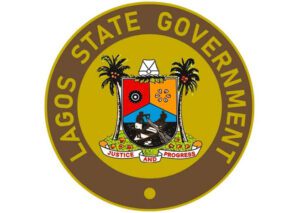Communication strategies in mergers and acquisitions(3)
By Goke Ilesanmi
Last week, we said communication does not come easily to many managers who throughout most their careers have dealt almost entirely with hard facts and figures, not the soft people issues. We added that these managers may not be good enough as leaders. We stressed that many managers are uncomfortable about giving tough messages to their staff, and being honest with them about bad news of job cuts or site closures.
We said mergers involve many technical and complex issues required by law, the stock exchange and other regulatory bodies. We explained that communication is not legally required and so it is an easy area to drop down the priority list.
We stressed that the communication function is not always represented at a sufficiently high level within the organisation, and even then the head of the function may not be strategically-minded. We expatiated that lack of information flow from the upper level of management will cause problems for the first-line managers and supervisors who need to deal with the frontline employees every day, as they will not have enough information to satisfy the day-to-day needs of their staff. We said this creates the dreaded communication vacuum – filled by the grapevine – that will undermine the positive aspects of the merger.
We added that after a merger has taken effect, strategic communication is central to the integration of the two organisations into a more effective single entity. We said by definition, this requires change communication and stressed that effective communication during the post-merger phase is required to ensure a common understanding of the business case for the merger and the vision for the future.
We said it is also required to help people understand and internalise change; keep the organisation focused on customers and productivity; reinforce desired behaviour; promote cultural alignment; help with retention and motivation of key talent; and control the rumour mill.
Pre-deal planning
Planning mergers and acquisitions communication may be a communication team’s most confidential assignment—much more so than quarterly earnings—and their most important one, too, since a mergers and acquisitions deal is a great opportunity to reposition the company. Ideally, senior management will invite you to the table as part of a cross-functional team that could include general counsel, investor relations (for public companies) and human resource as soon as the deal looks real.
One of the initial challenges faced by the communication team is to create and finalise the merger plan and documentation within a short time frame, and without a lot of information, since details change during each negotiation session.
As with any announcement, you need to define the deal. Who is doing the acquisition? Is your company acquiring or being acquired? If your company is doing the acquisition, you will have more control over the process—and more work to do. What is being acquired? Is it the entire company or a business unit? How much is the deal worth? If the deal involves two small, private companies, you may not want to disclose the actual figure, since the media’s interest heightens when a lot of money is at stake. However, reporters may be more interested in a smaller deal involving a “hot” company or sector than a larger deal involving two decent but unexciting companies.
What is the strategy behind the deal? Is it to gain access to new markets, new technology or services, or to provide improved customer service by combining complementary offerings for one-stop shopping? In other words, why does this deal make sense, and why are you doing it now? Communicating the strategy effectively can help you sell the deal—which is especially important when shareholders of public companies are involved—but it is important, too, to sell the deal to the marketplace.
Harrison says if the deal involves a public company and it is material, you have to announce it as soon as the contracts have been executed. Otherwise, you may have some discretion as to when to announce. What are the goals of the announcement? The initial goals for the acquiring and target companies may be very different—especially if what is being acquired is only a division—but the communication teams from both have to get together and finalise consistent messages. Who are the main audiences for the deal? Stakeholders may include shareholders, current customers, local community leaders and employees. Determine each audience’s needs and interests and develop appropriate communication.
Logistics
The CEO of the acquiring company needs to travel to the headquarters of the target company to welcome new employees. But if the target company has multiple offices across countries and time zones, reaching all employees at the same time will be an issue. What is changing? Is the new entity changing its name, management team, stock ticker, logo or headquarters? Who is writing the press release? If the acquisition involves an entire company, you need only one release. If a business unit is being acquired, the company selling the unit may want to issue its own release to explain why the sale makes sense.
For public companies in particular, communication departments must keep information confidential before the announcement. Norman Birnbach, president of Birnbach Communications, a Boston-based PR agency says, “A lot of companies use code names for the deal itself and for the other company involved. Otherwise, you have a crisis, as was the case when the Wall Street Journal broke the news that U.S-based Federated Department Stores was discussing a possible acquisition of U.S-based May Company—setting off a month of rumours that had to be handled concurrently with negotiations.”
GOKE ILESANMI (FIIM, FIMC, CMC), CEO of Gokmar Communication Consulting, is an International Platinum Columnist, Professional Public Speaker, Career Mgt Coach and Certified Mgt Consultant. He is also a Book Reviewer, Biographer and Editorial Consultant.
Tel: 08055068773; 08187499425
Email: [email protected]
Website: www.gokeilesanmi.com.ng




